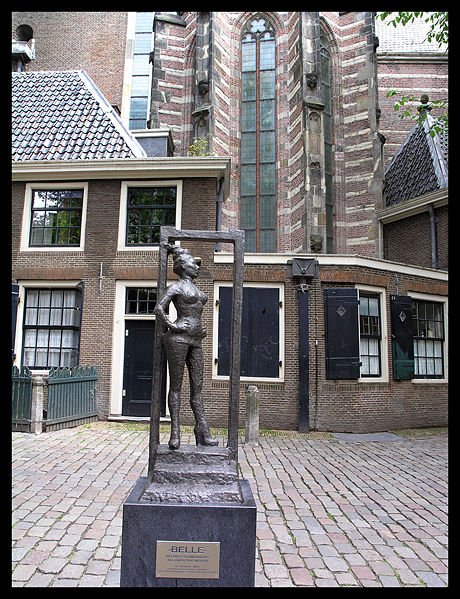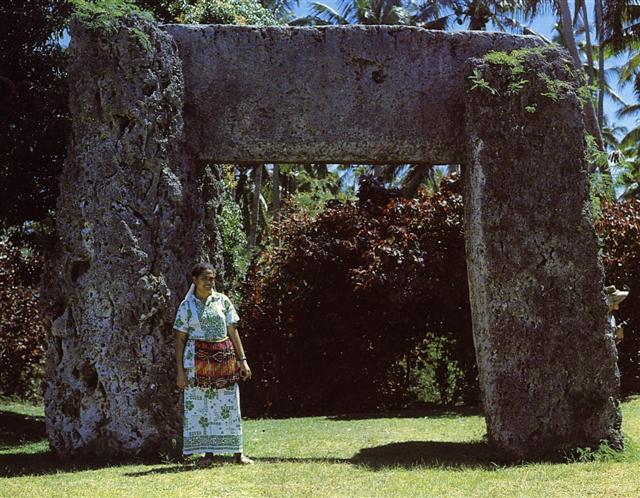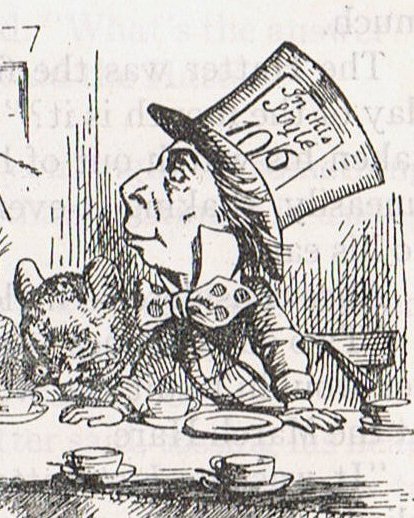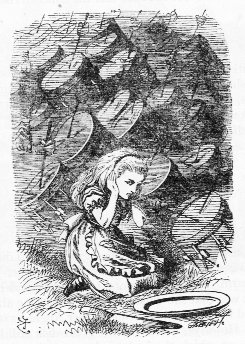14-7. There was a pair of women in the sky
and this was the only place in the Mesopotamian list of ecliptic
stations with a conjunction between a pair of ruling stars
(β in Leo and β in Virgo).
... Like the names of most other Greek letters, the name of beta
was adopted from the acrophonic name of the corresponding letter
in Phoenician, which was the common Semitic word *bayt
('house'). In the system of Greek numerals beta had a
value of 2.
... The traditions show that the residences
of the king were fairly flexible. The building of new houses was
obviously the result of (male) births in the royal family. In
each case, the house that was built last is left to the newborn
son and his mother, together with a specific servant, while the
king has a new and separate residence constructed for himself
...
 |
 |
 |
 |
|
Eb5-10 (326 + 159 = 485) |
Eb5-11 |
Eb5-12 (161→
225 - 64) |
Eb5-13 |
|
kua tu te Ao |
te
rima kua haga i te henua
kaoa o te heke |
te henua - te kiore |
|
Ao.
Large dance paddle. 1. Command, power, mandate,
reign: tagata ao, person in power, in
command, ruler. 2. Dusk, nightfall. 3. Ao nui,
midnight. 4. Ao popohaga, the hours
between midnight and dawn. Aô, to serve
(food); ku-âo-á te kai i ruga i te kokohu,
the food is served on a platter. Vanaga. 1.
Authority, kingdom, dignity, government, reign (aho);
topa kia ia te ao, reign; hakatopa ki te
ao, to confer rank; ao ariki, royalty;
ka tu tokoe aho, thy kingdom come. PS Mgv.:
ao, government, reign. Mq.: ao,
government, reign, command. Sa.: ao, a title
of chiefly dignity; aoao, excellent,
surpassing, supreme. 2. Spoon; ao oone,
shovel. 3. Dancing club T. 3. Aonui (ao-nui
2), midnight. 4. Pau.: ao, the world. Mgv.:
ao, id. Ta.: ao, id. Mq.: aomaama,
id. Ma.: ao, id. 5. Pau.: ao, happy,
prosperity. Mgv.: ao, tranquil conscience.
Ta.: ao, happiness. 6. Mgv.: ao,
cloud, mist. Ta.: ao, id. Mq.: ao, id.
Sa.: ao, cloud. Ma.: ao, id. 7. Mgv.:
ao, hibiscus. 8. Ta.: ao, day. Mq.:
ao, day from dawn to dark. Sa.: ao, id.
Ma.: ao, id. 9. Ta.: ao, a bird. Ha.:
ao, id. 10. Mq.: ao, respiration,
breath. Ha.: aho, breath. 11. Mq.: ao,
to collect with hand or net. Sa.: ao, to
gather. Ma.: ao, to collect. Ta.: aoaia,
to collect food and other things with care.
Churchill.
Heke. (Heke),
hakaheke, to pull down, to overthrow. Mgv.:
akaeke, to overthrow, to vanquish; heke,
to fall down, to fall to pieces: akaheke;
akahekeheke, to demolish. Mq.: heke, to
crumble, to fall down; hakaheke, to demolish,
to pull down. Churchill. Kai heke,
hakaheke, to deflower.
Kahukahu o heke, an octopus hiding in his
ink. Mq.: ve'eve'e
'tentacules du heke'. Barthel 2. Pau.:
Heke, to purge. Mgv.: heke-toto,
hemorrhage. Ta.: hee, to purge. Mq.: heke,
to drip. Ma.: heke, id. Pau.: Hekeheke,
elephantiasis. Ta.: feefee, id. Mq.: fefe,
id. Sa.: fe'efe'e, id. Mgv.: Heke,
eke, octopus. Ta.: fee, id. Mq.: heke,
feke, fee, id. Sa.: fe'e, id.
Ma.: wheke, id. Ta.: Hee, to slide, to
swim. Sa.: se'e, to slide, to shoot the
breakers. Ha.: hee, id. Mq.: Hee oto,
to cut. Sa.: sele, id. Ha.: helehele,
id. Churchill. Ma.: 1. Migrate. Islands of History.
2. Rafter. Starzecka. |
|
VISIBLE CLOSE TO
THE FULL MOON: |
|
JULY 10 (191 = 161 + 30) |
11 |
(193 → 225 - 32 = 161 + 32) |
13 |
|
Sept 12 (255) |
13 |
14 (80 + 354 / 2) |
15 |
|
θ Crateris (175.0),
υ
Leonis (175.2),
ω
Virginis (175.3),
ι
Crateris (175.5) |
ο Hydrae (176.1) |
ζ Crateris, ξ Virginis
(177.0),
λ
Muscae (177.1),
ν
Virginis (177.2),
μ
Muscae (177.8) |
Al Sarfah-10 (Turn)
/
Uttara Phalguni-12 (Second
Reddish One)
/
Zibbat A.-16 (Tail of the
Lion) / Shēpu-arkū sha-A-17
(Hind Leg of the Lion)
93 Leonis (178.0),
DENEBOLA = β Leonis
(178.3),
ALARAPH (Unarmed) = β
Virginis
(178.6) |
 |
|
THE SUN: |
|
March 14 (365 / 5) → π |
15 (31 + 28 + 15 = 74) |
16 (365 + 75 = 440) |
17 (441 = 80 + 361)) |
|
Λ Piscium (358.0),
MANUS CATENATA = ι
Andromedae
(358.1), θ Phoenicis, ALRAI = γ Cephei (358.4),
κ Andromedae (358.7)
*358.4 - *41.4 = *317.0 |
ω Aquarii (359.2),
78 Pegasi
(359.5) |
ψ Andromedae (360.1),
σ Phoenicis (360.4)
*360.4 - *41.4 = *319.0 |
γ¹ Oct. (361.4),
φ Pegasi
(361.7)
*361.4 - *41.4 = *320.0 |
|
*358 for Manus Catenata seems unlikely
for such a prominent place. But should we count from the
Julian equinox in day 84 instead of from the Gregorian
in day 80 things become more suitable, because *358 - *4
= *354, which surely would make people associate to 12 *
29½.
 |
And for another week timespace would
evidently then continue
to run in the 'wrong' direction
(withershins, backwards as if ruled by the Moon):
 |
 |
 |
 |
|
Eb5-14 |
Eb5-15 (326 + 164 = 490) |
Eb5-16 |
Eb5-17 (166) |
|
e hakatopa
hia
mai |
te
rima kua tu |
te ua |
te
henua - te kiore |
|
Topa. 1. To bend
down, to drop to the ground;
to fall on a certain date.
2. To stop doing something,
to drop; ina ekó topa
taau aga, do not stop,
keep doing your work. 3. To
remain, to be left over, to
be unfinished; he topa te
kai, the food is not
finished, there is some
left. 4. To come to one's
memory; i te aamu he topa
te vânaga tûai, in the
legends old words come to
memory. 5. To remember, to
reflect (with mana'u
as subject); e-topa
rivariva tokorua mana'u ki
te me'e nei, let the two
of you think carefully about
this thing. Vanaga. 1. Wine;
topa tahaga, id. 2.
To fall in drops, to
descend, to go down, to
abdicate; topa iho,
to fall; hakatopa, to
knock down, to cause to
fall; hakatopa ki raro,
to knock down, to subjugate.
3. Childbirth, abortion;
topa te poki, to lie in.
4. A feast, to feast. 5. To
arrive, to result; topa
rae, newcome; topa
iho, to come
unexpectedly; topa ke,
to deviate; topa no mai,
topa hakanaa, topa
tahaga, mau topa pu,
unexpected; topa okotahi,
solitary; hakatotopa,
to excite, to foment. 6.
Bad, low, cheap, failure;
igoa topa, nickname;
ariga topa, sinister,
sly, ill-tempered, to hang
the head; hakatopa,
to disparage; hakatotopa,
irresolute. 7. (Of upward
movement) topa ki raro,
to scale, to surpass;
hakatopa ki te ao, to
confer a dignity;
hakatopa ki te kahu, to
spread a sail; hakatotopa,
to make a genealogy.
Churchill. |
|
PHEKDA ('Thigh') = γ
Ursae Majoris,
β
Hydrae (179.3),
η
Crateris (179.9)
DENEB CYGNI (α Cygni) |
No star listed (180) |
π Virginis (181.0),
θ Crucis (181.5) |
12h (182.6)
ο
Virginis (182.1),
η
Crucis (182.5) |
|
Sept 16 |
17 |
18 (261 = 9 * 29) |
19 |
|
THE SUN: |
|
March 18 |
19 |
20 (261 - 182 = 79) |
21 (80) |
|
...
Ecclesiastically, the
equinox is reckoned to be on
21 March (even though the
equinox occurs,
astronomically speaking, on
20 March in most years)
... |
The Corner of the House of Virgo
(Zaniah,
η)

was
in the day before the
Creation of Our Present World -
which evidently could have been recreated
in "August 13 (225), i.e. in the
year 70 * 41 - 1842 AD = 1028 BC.
... Balancing the
notion of tapu, though not in
perfect dichotomy, is
the notion
of noa. This pertains to
mundane, ordinary objects and
functions - household and serving
utensils, the acts of preparing and
eating food, the many small and
common interactions of everyday
life. Noa is safe - without
preternatural sanction or restricted
association, it is demonstrated by
the lifting of the condition of
tapu from a particular
environment or object. A newly built
house, ornamented and fresh, would
be considered tapu - unsafe,
prohibited, raw with spirit and
inaccessible to the common touch of
people. Making the place noa
- 'blessing' it in current terms -
would involve ritual, and the
crossing of the threshold, usually
by a high-born woman. Her special
form of tapu would counter
the energies within the house, and
thus render it noa, and safe
for general entry. Such ritual
continues to be observed today; even
in the context of an ethnological or
fine arts exhibition, these
procedures are followed, to appease
the ancestral forces who may
generate tapu, which imbues
the objects with dread or beauty ...


And this would then have been 23 * 70 =
1610 (→
JUNE 10) years after the preceding
and similar such recreation in the Golden Age of
the Bull.

 |
 |
 |
|
Eb5-18 |
Eb5-19 (168) |
Eb5-20 |
|
te
tagata - e vai |
mama mamae
hia |
te henua -
Te kiore |
|
Mamae. Illness,
pain, to be ill or in
pain, afflicted;
tagata mamae,
the sick. Vanaga. Sick,
suffering, weak, ill;
mate maia mamae, to
depress; mata mamae,
drowsy, sleepy; mamae
kopu, bellyache;
mamae keo, headache;
mamae toto,
menses; ariga mamae,
to look ill;
hakamamae, to make
ill. T Mgv.: mamae,
to be ill, in pain,
suffering, sorrow. Mq.:
mamae, memae,
suffering, pain, grief.
Ta.: mamae, pain.
Churchill.
Kiore. Rat.
Vanaga. Rat, mouse;
kiore hiva, rabbit.
P Pau., Mgv.: kiore,
rat, mouse. Mq.: kioē,
íoé,
id. Ta.: iore,
id. Churchill.
 |
|
ALCHITA =
α
Corvi, MA WEI (Tail of
the Horse) =
δ
Centauri
(183.1),
MINKAR =
ε
Corvi
(183.7),
ρ
Centauri (183.9) |
PÁLIDA (Pale) =
δ
Crucis
(184.6),
MEGREZ (Root of the
Tail) =
δ
Ursae Majoris
(184.9) |
Hasta-13 (Hand)
/
Chariot-28 (Worm)
GIENAH (Wing) =
γ
Corvi
(185.1),
ε
Muscae (185.2),
ζ
Crucis (185.4), ZANIAH
(Corner) =
η
Virginis
(185.9)
*144.0 = *185.4 - *41.4 |
 |
|
Sept 20 |
21 (364 - 100 = 180 +
184) |
Equinox (265) |
|
"Aug 10 |
11 |
12 (224 = 265 - 41) |
|
JULY 18 |
19 (200) |
20 (224 - 23 = 201 = 265
- 64) |
|
THE SUN: |
|
March 22 |
23 |
24 (*3) |
From the Ao dance paddle of
the Moon to the September equinox at
the Rat (of the Sun) there were
10 days:
|
 |
*10 |
 |
|
255 |
265 |
|
te Ao |
Te kiore |
This distance seems to basically
correspond to the length between
December 22 (354 + 1) and December
31 (364 + 1), but then surely also
to be used at the other cardinal
points of the Sun, dancing to the
same rythm.
 |
*10 |
 |
|
manu i ruga o te take |
koia kua hoi -
te toka i haga
hia |
|
Aug 31 (*163 = *284
- *101) |
Sept 10 (*173 = *284
- *111) |
|
CORVUS: |
|
13 |
Hasta
the hand |
α, β, γ, δ,
ε Corvi
Gienah |
Hand or fist |
Sept 22
(265) |
|
Egyptian hand |
 |
Phoenician
kaph |
 |
Greek
kappa |
Κ
(κ) |
|
Kaph
is thought to have been
derived from a pictogram
of a hand (in both
modern Arabic and modern
Hebrew, kaph
means palm/grip) ...
...
The manik, with
the tzab, or
serpent's rattles as
prefix, runs across
Madrid tz. 22 , the
figures in the pictures
all holding the rattle;
it runs across the
hunting scenes of Madrid
tz. 61, 62, and finally
appears in all four
clauses of tz. 175, the
so-called 'baptism'
tzolkin. It seems
impossible, with all
this, to avoid assigning
the value of grasping or
receiving. But in the
final confirmation, we
have the direct evidence
of the signs for East
and West. For the East
we have the glyph
Ahau-Kin, the Lord
Sun, the Lord of Day;
for the West we have
Manik-Kin, exactly
corresponding to the
term Chikin, the
biting or eating of the
Sun, seizing it in the
mouth.



The
pictures (from Gates)
show east, north, west,
and south; respectively
(the lower two glyphs)
'Lord' (Ahau) and
'grasp' (Manik).
Manik was the 7th
day sign of the 20 and
Ahau the last ... |
Comparing with other text we can
find te ao used also at
Cb1-10,
where Metoro had been unusually
eloquent, mentioning that the
sky was moving (rutua te
maeva).
... Probably
Metoro's words are here
describing the whole package of
glyphs instead of commenting on
them each separately. He is
beginning by stating that drums
(te pahu) are sounding (rutua)
as a means of welcoming (te
maeva) and this is
meaningful if the beginning of
the text on side b is related to
the onset of a new year
...

|













